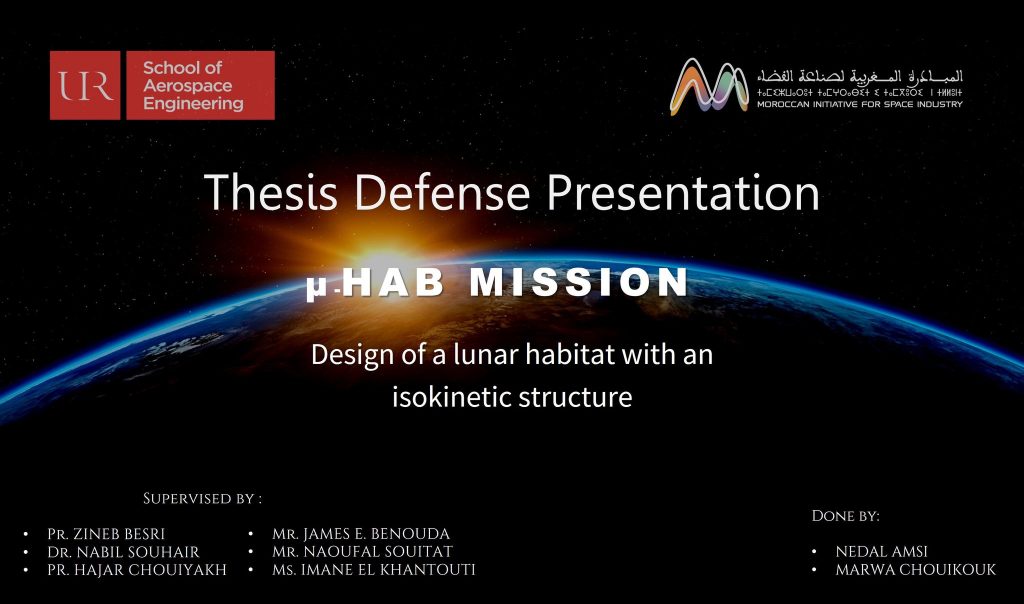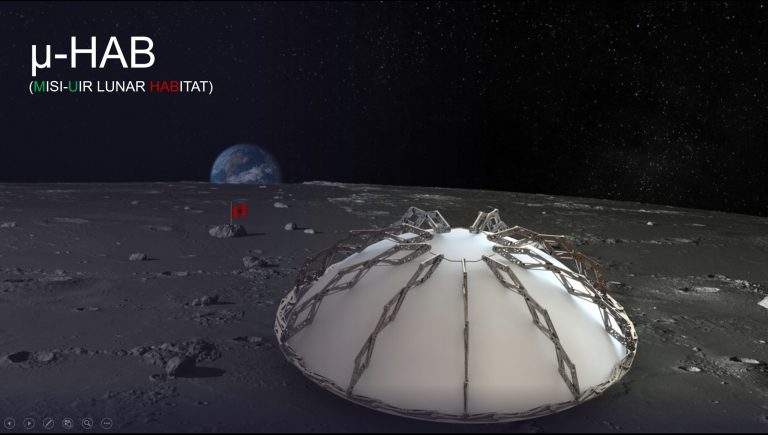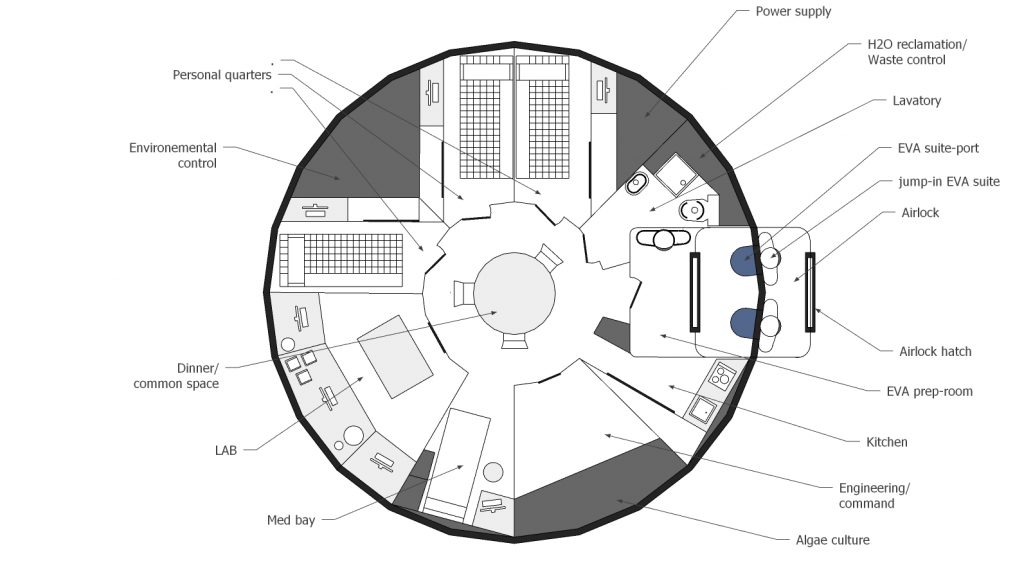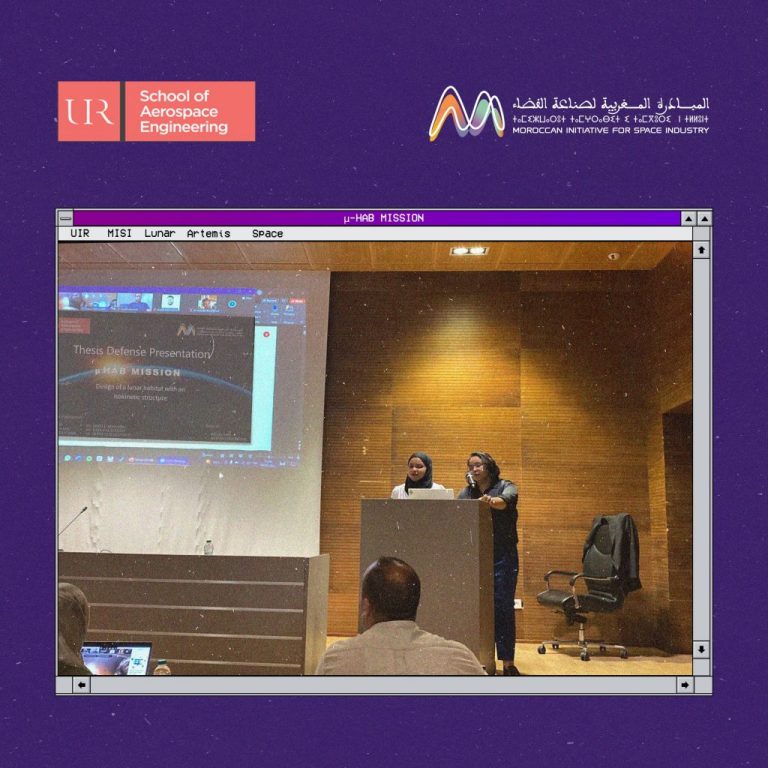 μ-HAB (mu-HAB) stands for MISI-UIR lunar habitat, a project launched in February 2022 as a result of a collaboration between MISI and the Université Internationale de Rabat (UIR) based on the research work by Dr. Nabil Souhair from MISI. μ-HAB is a new concept of a lunar habitat with a deploy-able isokinetic structure, designed to fit within today’s rocket fairings and later deployed on the surface of the moon in its final size. This project involved four students from the school of aerospace engineering, with MISI experts lecturing, following, and supervising them along the way as they worked on a research Master thesis exploring the feasibility study and design of the habitat.
μ-HAB (mu-HAB) stands for MISI-UIR lunar habitat, a project launched in February 2022 as a result of a collaboration between MISI and the Université Internationale de Rabat (UIR) based on the research work by Dr. Nabil Souhair from MISI. μ-HAB is a new concept of a lunar habitat with a deploy-able isokinetic structure, designed to fit within today’s rocket fairings and later deployed on the surface of the moon in its final size. This project involved four students from the school of aerospace engineering, with MISI experts lecturing, following, and supervising them along the way as they worked on a research Master thesis exploring the feasibility study and design of the habitat.
- UIR’s School of aerospace engineering
- 4 master students
- 2 master theses
Why settling on the moon?
While a settlement on the moon will undoubtedly require significant help and support from Earth to become self-sufficient, there is no reason to believe that a colony not only capable of sustaining itself, but also contributing to the “Earth-Moon system economy,” which can be considered the natural evolution of the current “global economy,” is impossible. Crawford published an in-depth review of Earth’s natural satellite’s resources in 2014, including water and its precursors, metals, rare Earth elements, and Helium-3. Such resources are required for habitability and can be used effectively to sustain the settlement. Their application can also be used to develop a lunar industrial system, which is essential for all future human activity in the solar system. If it is economically feasible, rare elements such as Helium-3 could be brought back to Earth.
Another aspect that should not be overlooked is the possibility of funding a fruitful research center for international collaboration, akin to today’s International Space Station. Another possibility for the lunar system is space tourism: today’s private companies are working on suborbital trips for wealthy investors, and it is very likely that those same stakeholders would be interested in a trip to the moon. While less pragmatic, another important reason for investing in a lunar settlement is the critical preservation of Earth’s human culture and biological information: a manned outpost on the Moon would be the ideal way to protect material and information from weather disasters, thanks to both its physical isolation from the planet and the ideal temperatures for natural long-term storage of biological material.
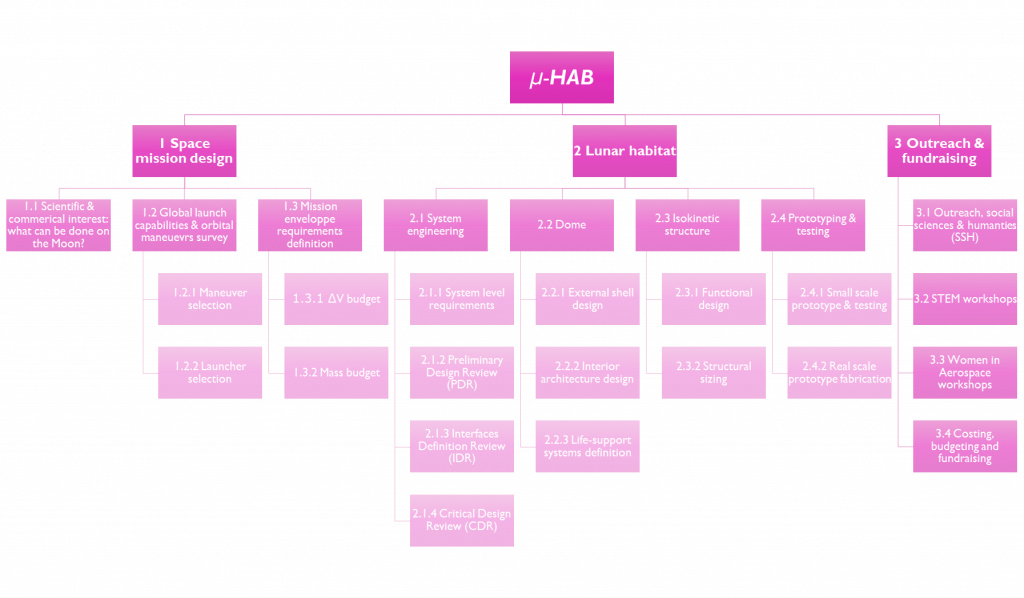
Our Solution
Taking into account the features of kinetic structures, we present novel and complete options for future Lunar habitats. One approach in particular is a modular design comprised of expandable modules that can be joined to one another while still functioning as a self-sustaining habitation. The key advantages of this design are its outstanding simplicity, transportability, and mobility, which allows it to be easily placed on the surface of the Moon or Mars and transported to the desired area once landed. This also necessitates less installation and maintenance effort. The proposed strategy is consistent with the Global Exploration Roadmap guidelines for using the Moon as a stepping stone for future Mars missions with crewed surface operations, as well as permitting international collaboration to achieve these goals.
